



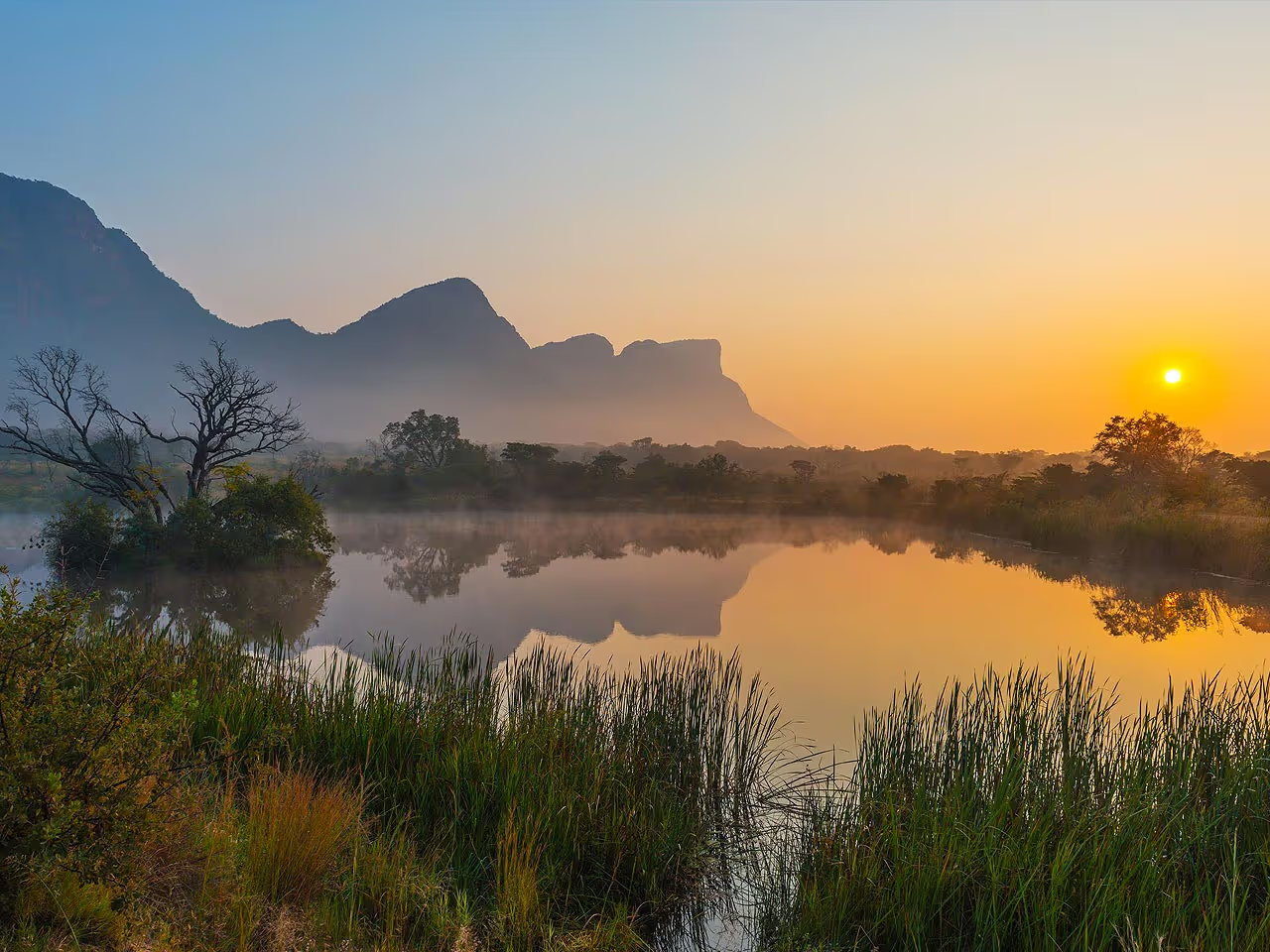
Limpopo is the most northerly province of South Africa sharing its extremities with Botswana, Zimbabwe and Mozambique.
And you know that great wildlife icon? The Kruger National Park? It starts here in the Limpopo and stretches south into Mpumulanga - another great hotchpotch of amazing sights and experiences.
If the thought of sharing your once-in-a-lifetime safari with a bunch of other humans galls, the park shares a fenceless boundary with a load of huge, private, exclusive game reserves that combine to form the Greater Kruger Park area.
Add to this wildlife bonanza all the cultural sites, swathes of wild flowers and 3 billion-year-old rocks and you’ll see why we think Limpopo is a river running, hippo splashing, granite thumping highlight of this great nation.
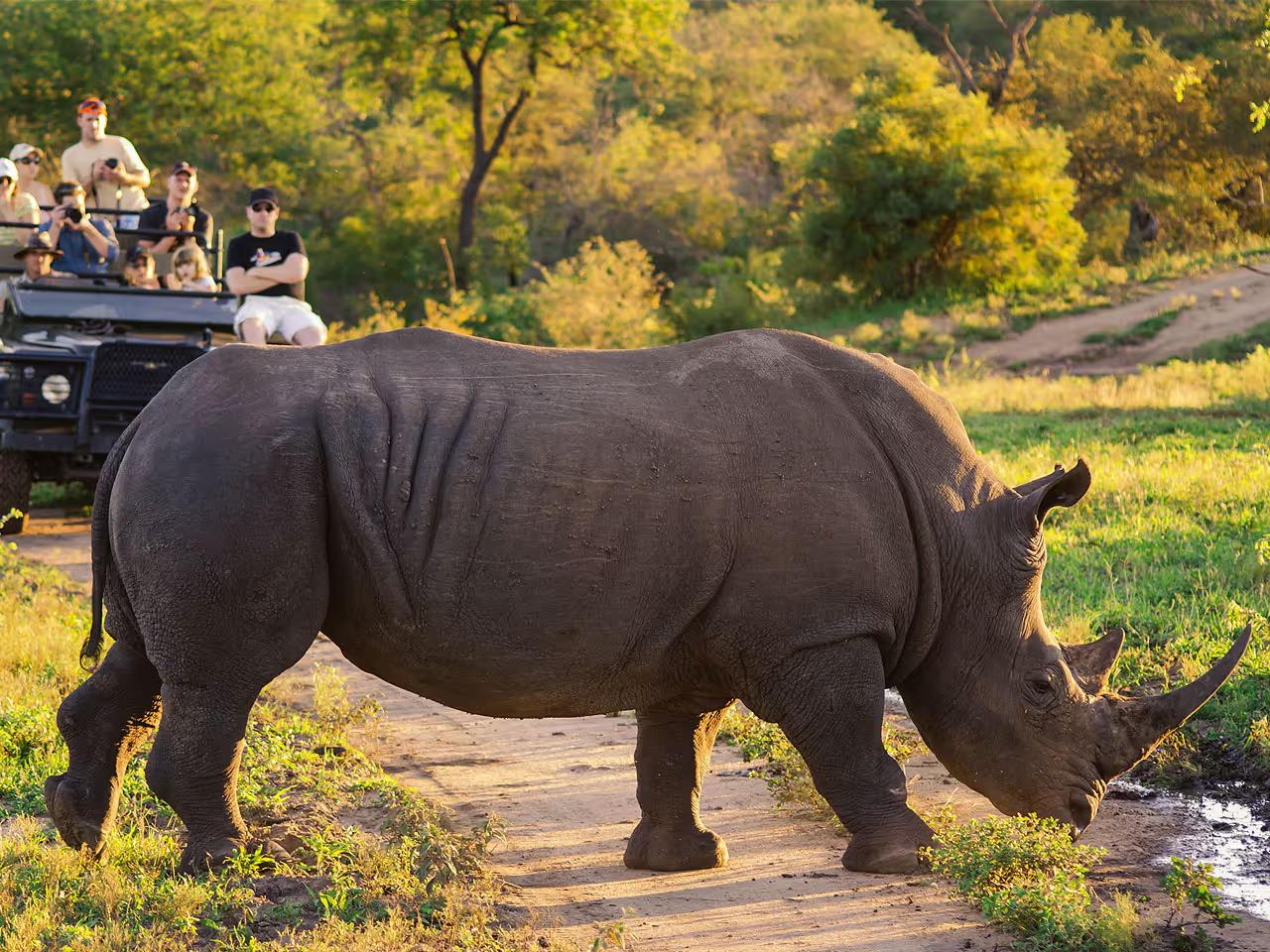
Let’s start with the big guy. 2020 marks the year the Kruger reached the top ten most Instagrammed national parks in the world. Yup. It’s number 7. People love it. People love going. People love photographing it and people love hash-tagging it. But mention it to some and they’ll screw their faces up. Eugh. Too busy. Too commercialised. Too much. Ok. Well yes, sometimes, but it's very easy to avoid all that drama.
Remember we said this province likes it big? Well, the Kruger is a super-sized game reserve. Bigger than Israel. Bigger than Wales. At a staggering 2 million hectares Kruger Park is the largest game reserve in South Africa and among the largest in the world.
Established in 1898, it was the brainchild of a man called Paul Kruger who spent twelve years trying to officially conserve the Lowveld wildlife. Today, it forms part of the Great Limpopo Transfrontier Park - a peace park joining forces with neighbouring game parks in Zimbabwe and Mozambique. Fences are coming down to allow game to roam freely - as they would have done for aeons before humans came along and interfered. When complete, the Greater Limpopo Transfrontier Park will extend across 35,000 sq km: 58% of it in South Africa, 24% in Mozambique and 18% in Zimbabwe.
But. Some people say the Kruger is too famous, so is it still worth a visit? We say "yay". For a start, there are more species of large mammals found in the Kruger National Park than in any other African game reserve. 147 of them. Bird-wise we’d say more than 500 species thanks to the astonishing botanical diversity with 16 different eco-zones, 336 tree species and 7 major rivers flowing through it. Plus, the geology of the place changes as you drive from one end to the other.
Yes, there are lots of visitors during the peak season and at some sightings - especially when it comes to the Big 5 - it can be overcrowded. But, the amazing diversity is astounding, even overwhelming and that’s what makes this such a remarkable reserve. This is Africa. At its most wild.
Splash out a bit and book yourself into an adjoining private reserve for the safari of a lifetime. These reserves share a fenceless boundary with one another and the Kruger itself. Wildlife roams as free as it does inside the park the big (very big) differences being: guided safaris with a tracker and professional game ranger; off-road traversing; night-drives and radio comms with other safari vehicles to help share sightings in an orderly and exclusive manner.
So, yes... Kruger is very much worth a tick.

Mapungubwe is at the very top of both Limpopo and South Africa. It’s a place where you could see an eagle flying over Zimbabwe or even glimpse a vulture heading for Botswana. In this national park you’ll be on the very edge of the country. Birdwatching is excellent, wildlife includes lions, leopards, elephants, buffalo and rhino.
There’s a rich biodiversity, plus you’ll find fossils and those 3 billion-year-old rocks we mentioned. No less than 24 different species of acacia - that picturesque African tree you see on all the brochures - baobabs in all sizes and quirky shapes and South Africa’s most significant Iron Age site. All of this cultural history on display has earned Mapungubwe a top spot in South Africa's handful of UNESCO World Heritage Sites.
You can walk through the Iron Age site and see San art and if you head up the 147 steps of Mapungubwe Hill you’ll find a graveyard full of kings.
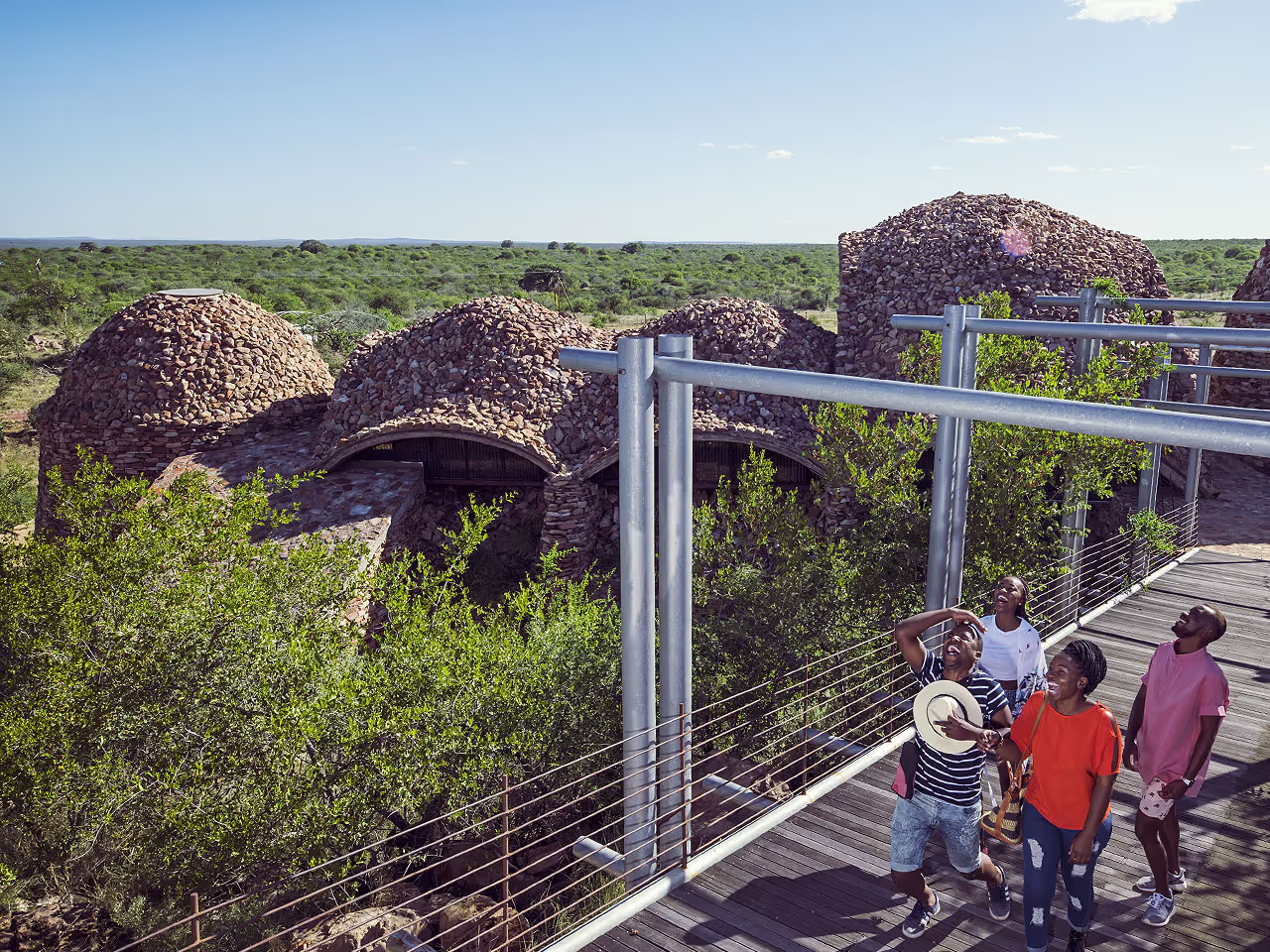
The interpretive centre and museum near the main gate is well timed. Here you can learn about the oldest known kingdom in Southern Africa, older even than Great Zimbabwe. You can see archaeological finds from the 1930s and learn about the history and culture of the people who lived here from 1220–1290 AD. It’s also one of the country’s finest modern buildings too - even winning the World Architecture Award Building of the Year in 2009.
Finally, there’s the Ribolla Cultural Route to explore - you can visit people working in their home villages and see how traditional Venda people live.
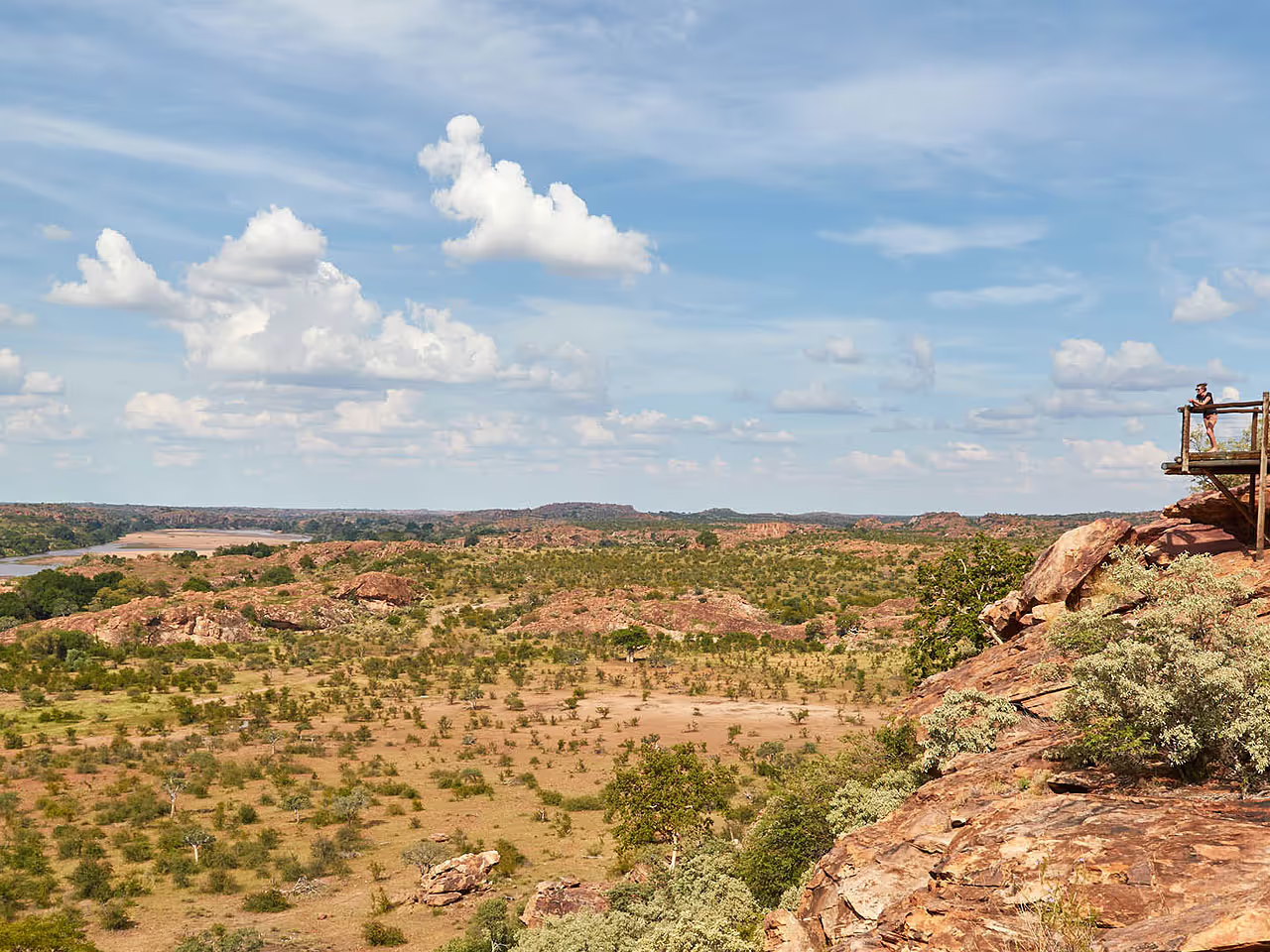
We’re still in the Mapungubwe National Park but have given these beauties their own paragraph for good reason.
When we say ‘these’ we’re talking about a series of large wooden platforms on top of the tall escarpment that looks out onto the floodplain. They’re four decks called Sunrise, Main, Confluence and Sunset and they really sock you with their stunningness. Which we know is not a word but you’ll be at a loss, too, when you have a gander yourself. AN uninterrupted view over the Limpopo and Shashe Rivers and three countries thrown in too - yup, there’s Botswana on the left, Zimbabwe on the right and oh, yes, well, South Africa in the middle. A small white beacon on the little island in the middle of the confluence shows the exact point where the three countries conjoin.
And if something tiny looks massive chances are it’s an elephant. Come an hour before sunset if you want to totally blow your mind. Or at sunrise. The viewpoints come complete with scurrying rock dassies. Bless ‘em.

Staying with the theme of national parks, Marakele is another Limpopo highlight.
It’s in the heart of the Waterberg Mountains, one of the oldest mountain ranges in the country. The Waterberg was the first biosphere to be declared a UNESCO World Heritage Site in South Africa. Which tells you something. There’s a massive amount of birds, big game and even bigger trees. Humans have gravitated towards it’s splendour for millennia with some archeological sites dating back to primitive sub-species.
Marakele means ‘place of sanctuary' which is apt. The usual wildlife suspects are here plus caves to explore and trees galore. The endemic Waterberg cycads grow up to 5m. Their Latin name, Encephalartos eugene-maraisii, is a nod to the man who discovered them: botanist Eugene Marais. He lived in the Waterberg for 16 years and was the first person to study the behaviour of wild primates. His observations continue to be cited in contemporary evolutionary biology and he’s also considered one of the greatest Afrikaner poets.
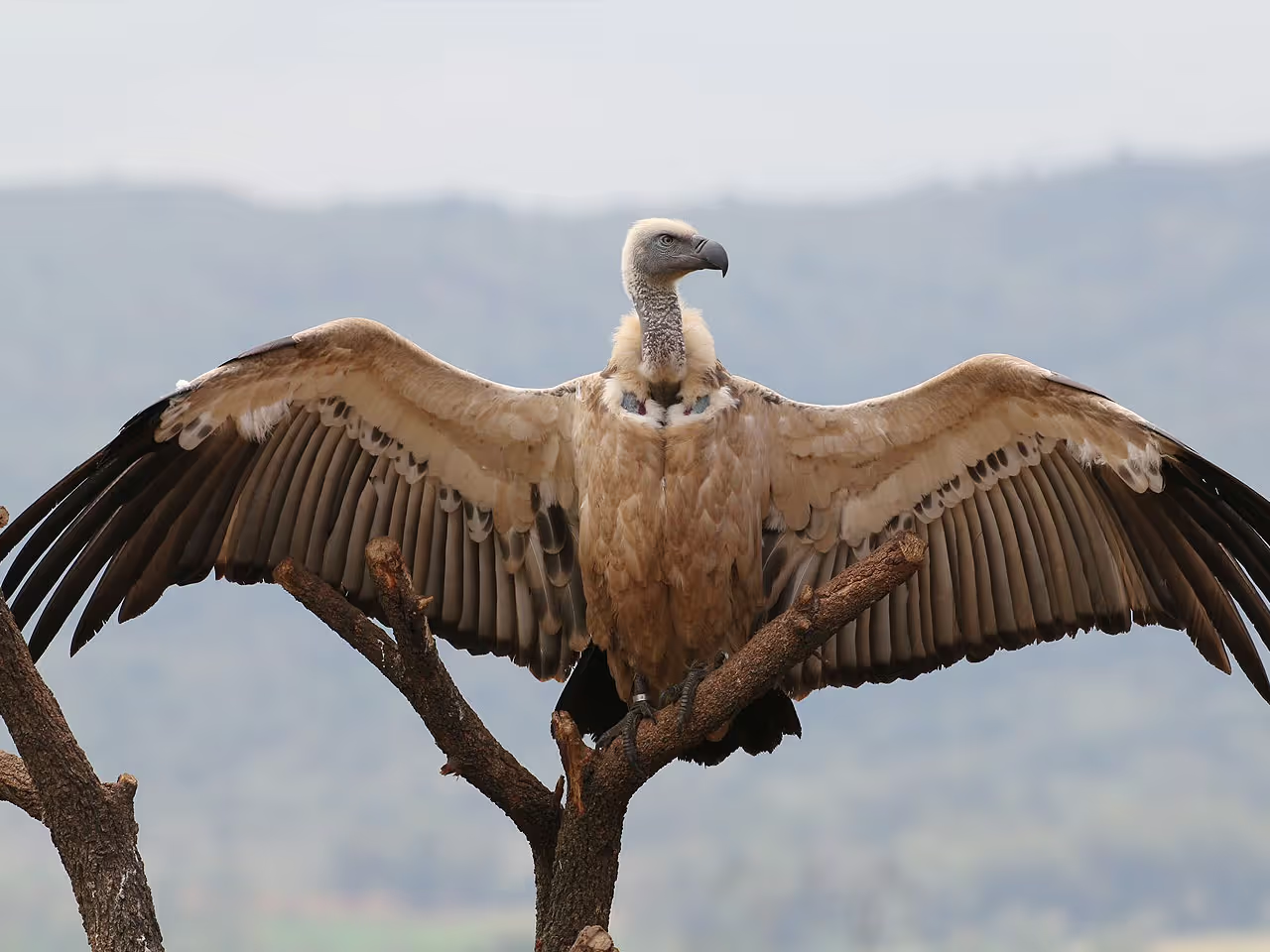
Let’s just stay in Marakele for a minute and throw in the Lenong Viewing Point. Actually, add it to your bucket list, it’s a must see.
It’s a snaking drive up to the summit where you'll find big birds living large. Try and spot the endangered Cape vulture. This is one of the world’s largest colonies with more than 800 breeding pairs. They only lay once a year, which is not going to help with the endangered list, and they are Africa’s only true scavengers never hunting for food. A group of 50 will reduce the remains of an antelope to bones in 20 minutes. Talk about drive-thru.
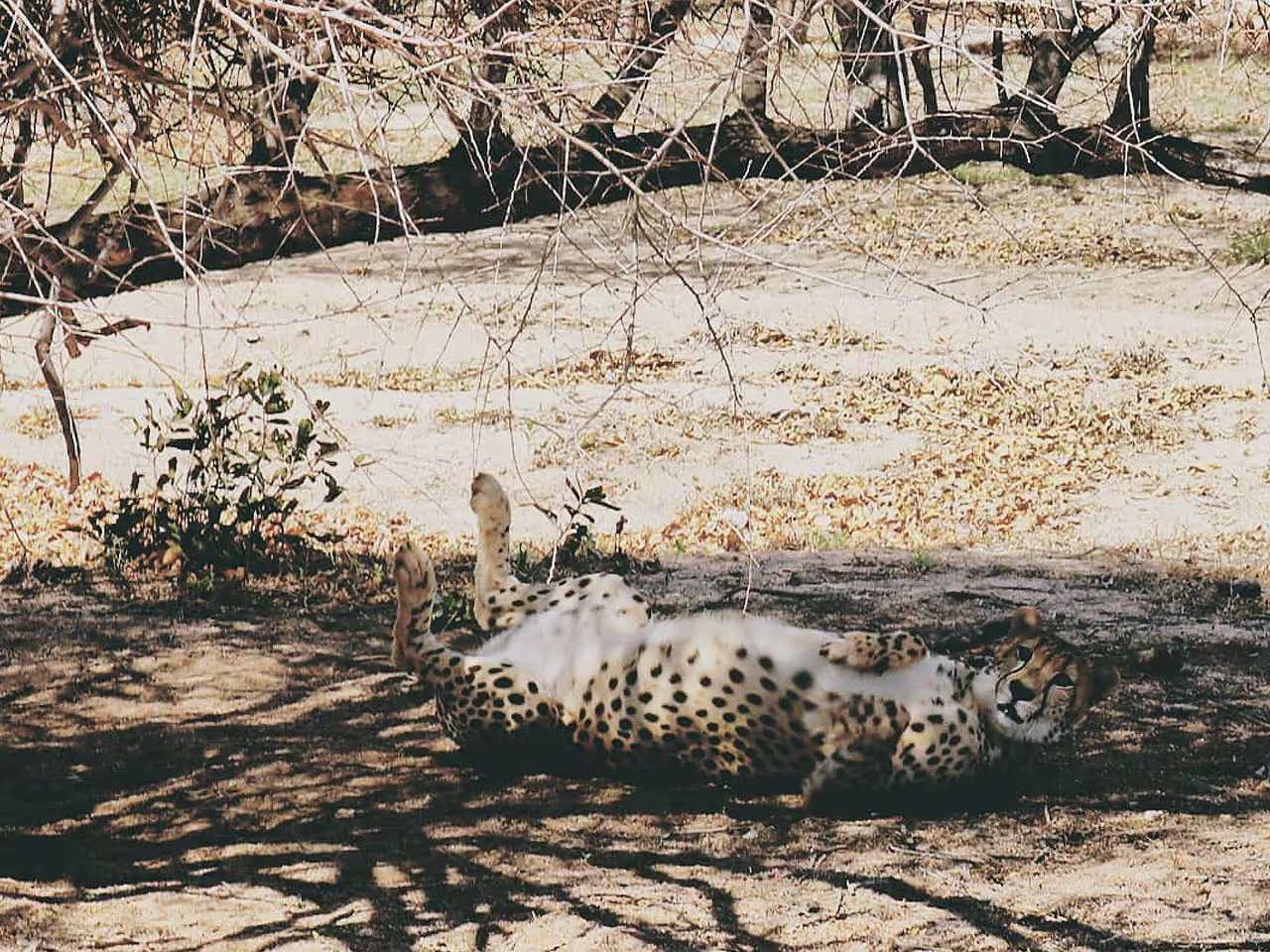
And seeing as we’re talking about vultures, let’s go here next - the Hoedspruit Endangered Species Centre or HESC. They actually have a ‘vulture restaurant’ where left-over bones and meat from other animals are served.
But it’s not just vultures they help here. The centre conserves many rare, vulnerable and endangered animal species including cheetah, lion and the African wild dog.
HSEC runs research, breeding and education programmes. They rehabilitate injured animals and also work to release captive-bred animals into the wild. Established in 1990 they’ve since become a key player in South Africa's extensive wildlife conservation efforts. Their base forms part of the Kapama Private Game Reserve and they work closely with Pretoria Zoo and the University of Pretoria. You can join them on game drives and see them at work.

Time for a history lesson. This National Heritage Site is home to one of the greatest paleontological records of human evolution in the world.
Makapansgat is a series of 72 dolomitic limestone caves where the remains of an early human-like primate ancestor were found, or kind of exploded really. The caves were being mined for limestone in the 1920s, when a large number of fossil bones were suddenly blown out of one of them. Maybe the perpetrator was a tad rattled and hollered, “Nothing to see here!” because nothing much happened until 1947 when the caves were finally investigated. And then it was confirmed. These were the remains of Australopithecus africanus. Early man.
Artefacts from throughout the Stone and Iron Ages have been found here too. And, in the Historic Cave, a chief called Makapan and his 1,000-plus followers were besieged for a month in 1854 by Paul Kruger and the Voortrekkers. You need to pre-book visits and might be joined by primates like vervet monkeys who happily live on the berries and seeds - early man probably did too.

Seeing as we’re talking monkeys let’s make a nice segue and stop at this place, Bambelela. It’s a wildlife care and monkey rehabilitation facility just 20km outside of Bela Bela.
By the way, you’re still in the Waterberg area here. Established in 2003, this is a place which rescues, rehabilitates and releases members of three South African primate families; the lesser bush baby, chacma baboon and the vervet monkey. The ubiquitous vervet being their most frequent customer. Bambela rescues these injured and orphaned monkeys, facilitates troop formation and places them in monkey-friendly game farms.
To date, 15 troops totalling 300+ monkeys have had a second chance to live and live free at that.
Before we leave, it’s worth noting the town of Bela Bela is known for its natural hot springs. And they say relaxing in the steaming mineral water is not only good for the skin but the soul as well. Ahhh! We believe. We believe.
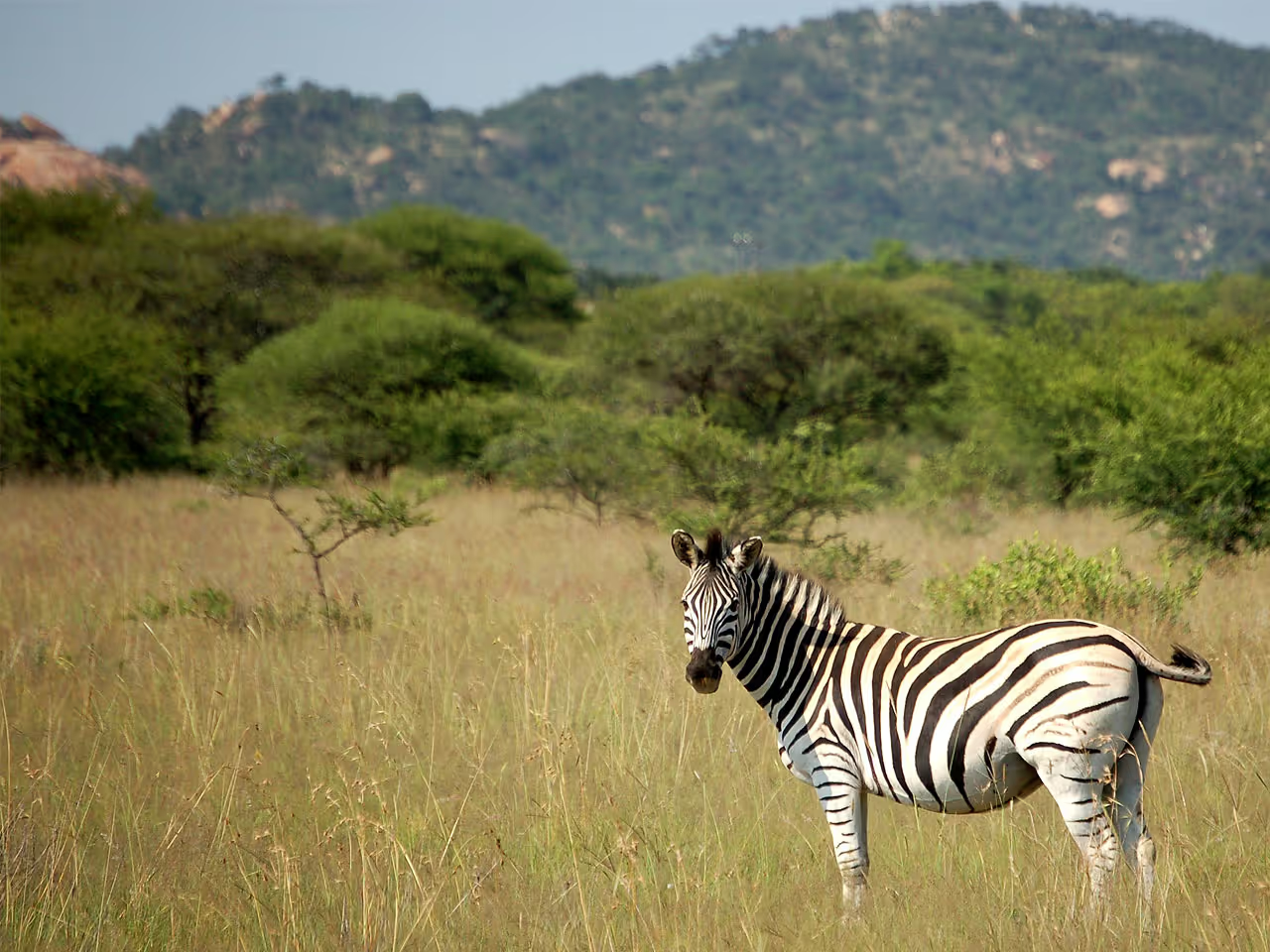
Drive north and you’ll reach the Polokwane Game Reserve. What’s great about this place is you can see quite a bit in one afternoon because it’s not overwhelmingly huge. In fact, it’s 'only' 32.5 square km.
Despite its size, Polokwana is one of the country’s largest and most diverse municipal nature reserves. With 21 wildlife species it’s definitely worth a look-in especially if white rhino are on your list off must sees.
Birdlovers will find over 300 species on record here and it’s a great place to hike.
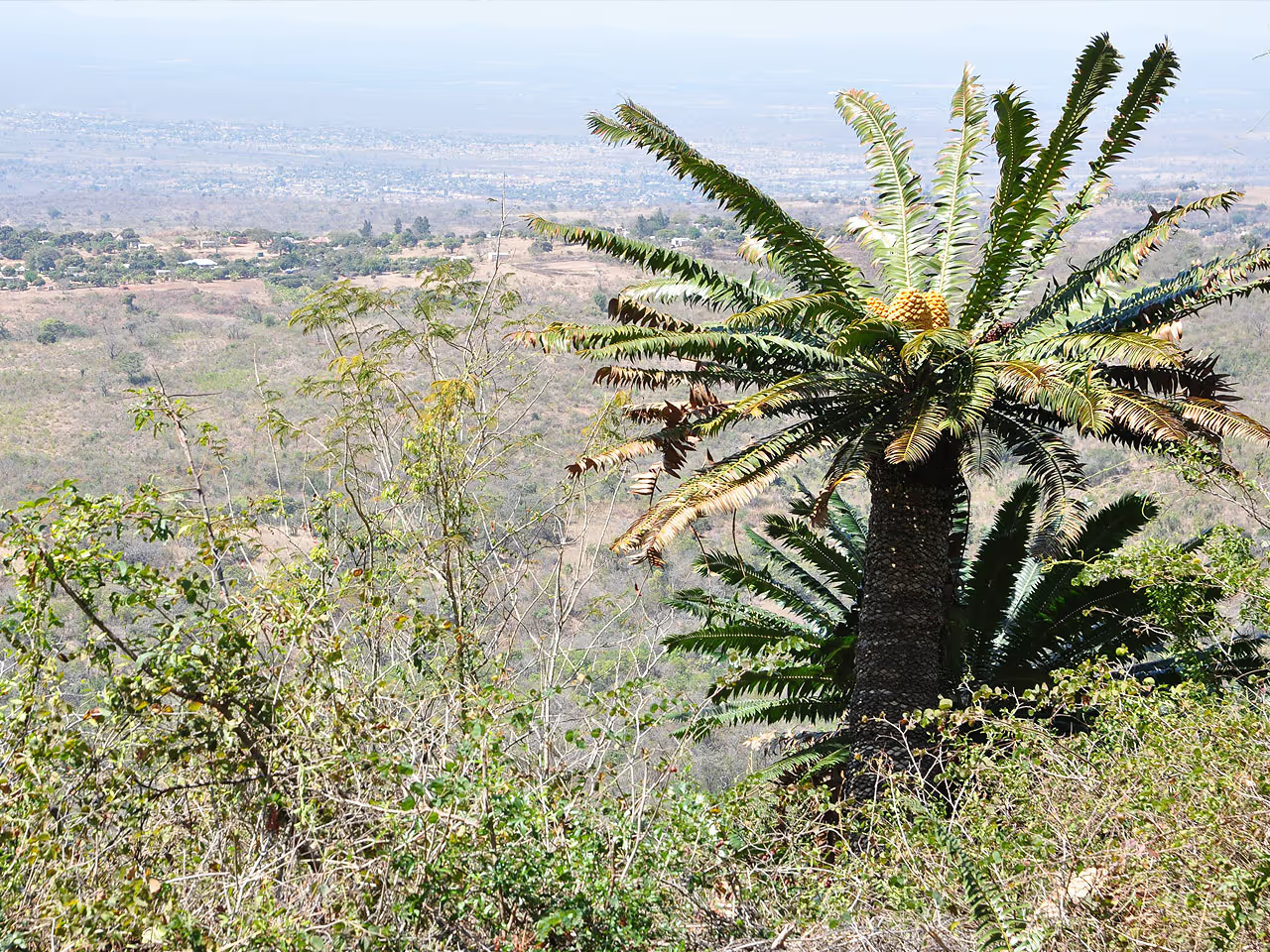
The home of the fabled ‘rain queen’ and some of the oldest and largest Cycad specimens on earth.
The Modjadji cycad was once the main diet of the prehistoric mammal-like reptiles that lived here and it still forms a unique forest. A forest quite likely unchanged since prehistoric times having been protected on pain of death for the exclusive use by succeeding generations of Modjadji ‘rain queens' - queen supreme since time immemorial.
The Modjadji are a matriarchal society and only women are allowed to enter the village. You'll see the largest concentration of a single cycad species in the world. They are profuse giants. Seriously. Often exceeding 10m tall, their cones weigh up to 40kg. Ouch!
So there you have it. Limpopo. A peaceful province packed with perfection - we’re trying a bit of alliteration ‘a la Kipling’ here. He thought it worthy of a mention in The Elephant’s Child and so do we. The ‘great grey-green greasy’ Limpopo is definitely not to be missed.




"A dream come true"
We had the most amazing family holiday, everything worked so perfectly, the arrangements and accommodation was spectacular!
"Unforgettable trip to Namibia – Thank you Namibia Tours & Safaris!"
We are a group of four from Romania and spent 3 unforgettable weeks in Namibia. We can't recommend them enough, and for any future travels in Namibia or other parts of Africa, we will definitely use their services again.
"We had a great experience"
From the time we put the key in the ignition till we boarded the plane in Windhoek nothing went wrong.
"Unforgettable bird photography trip in Namibia"
It was a fantastic experience, everything was very well organised, went smooth and according to expectations. It was our first self drive in Africa and it was a great, unforgettable time.